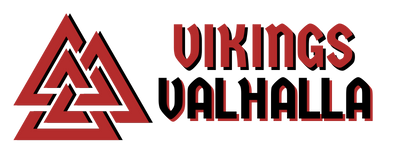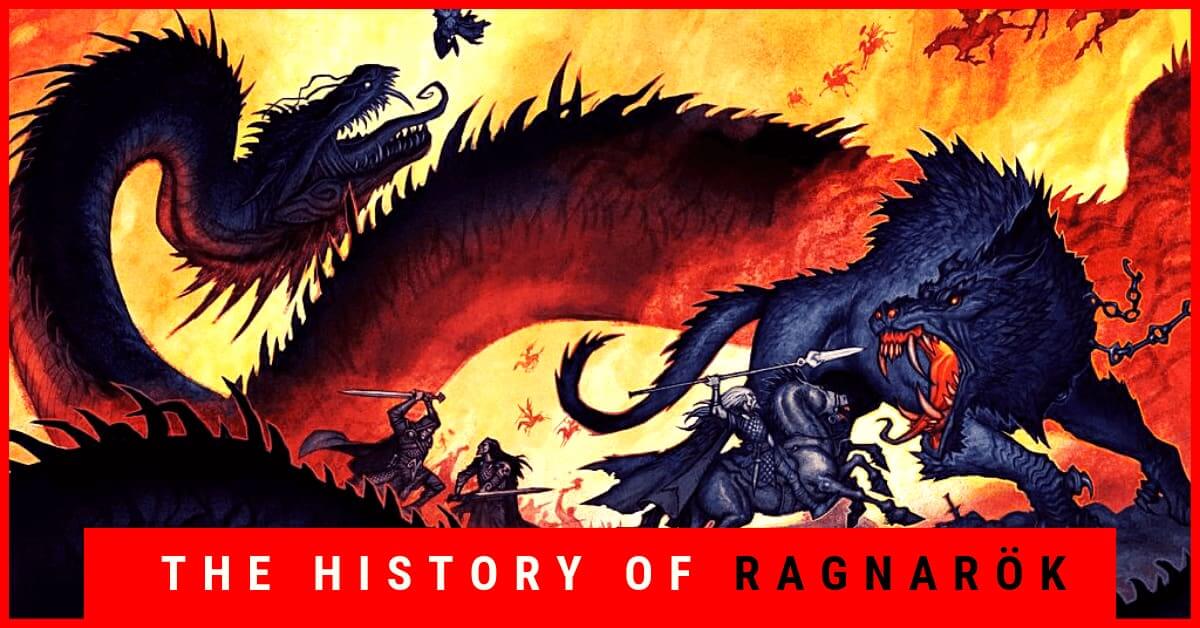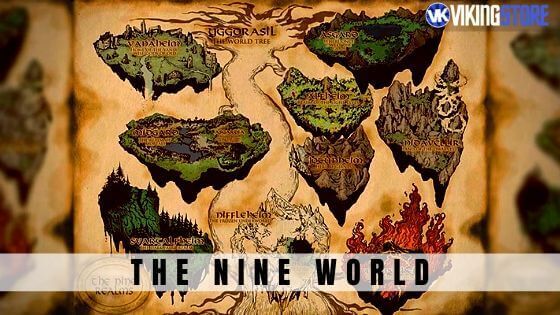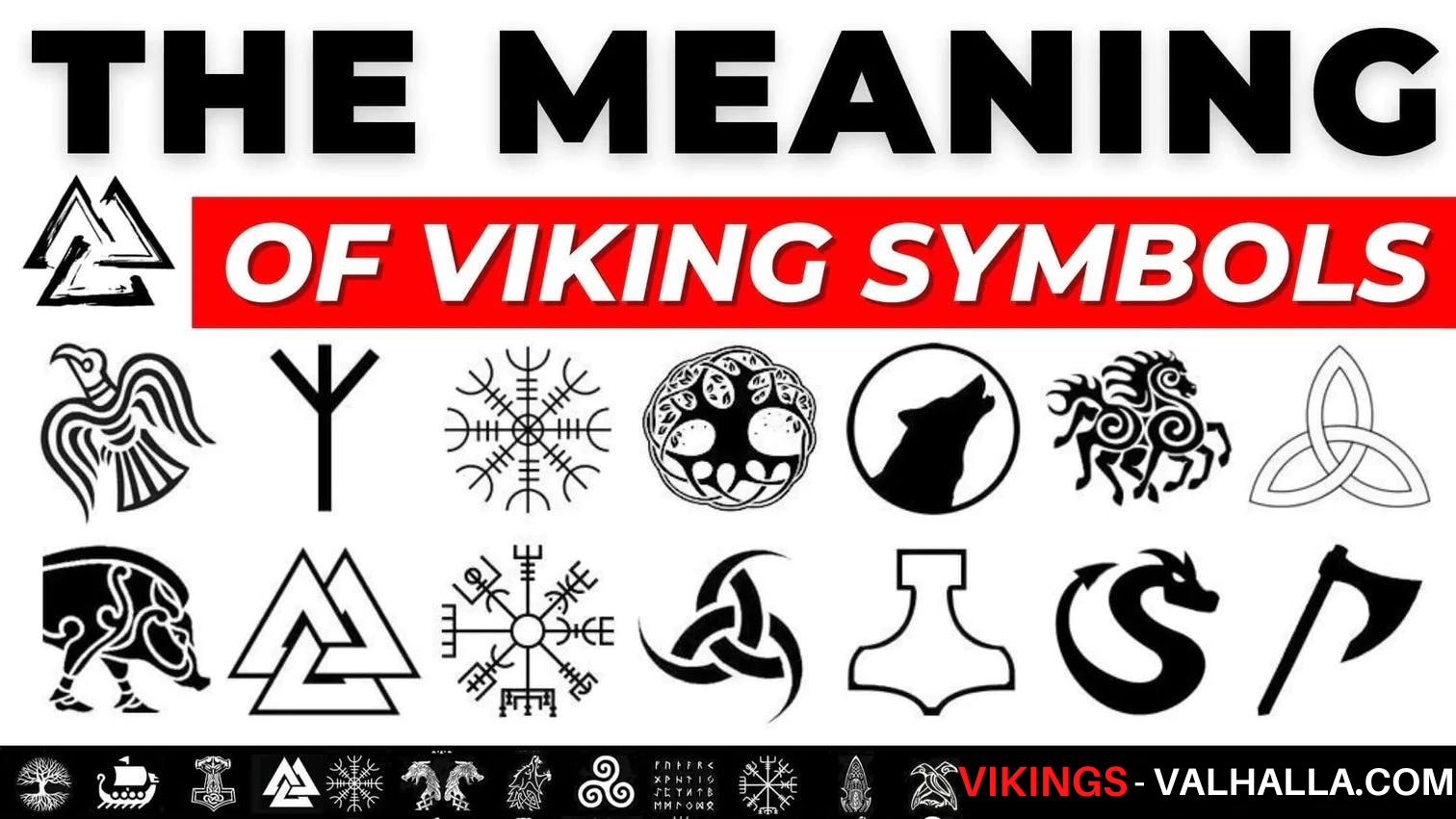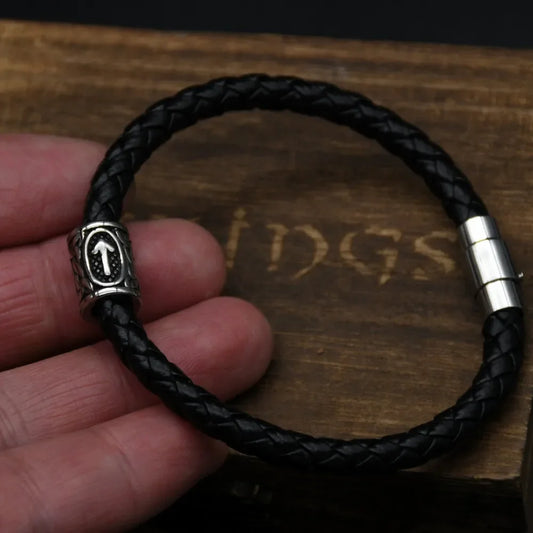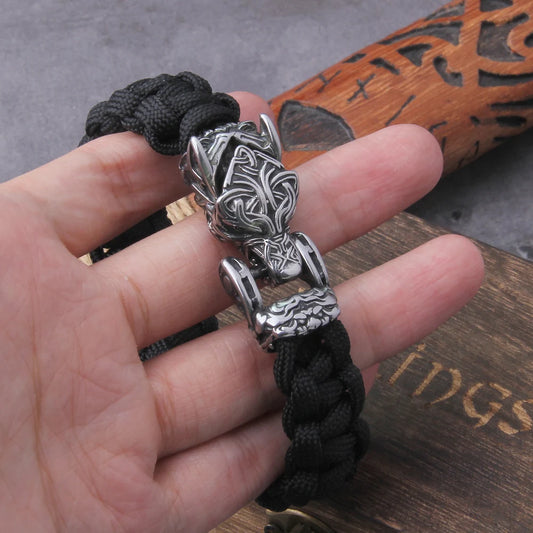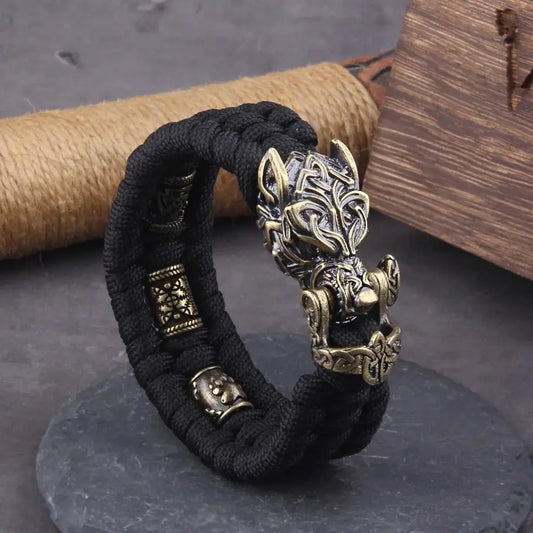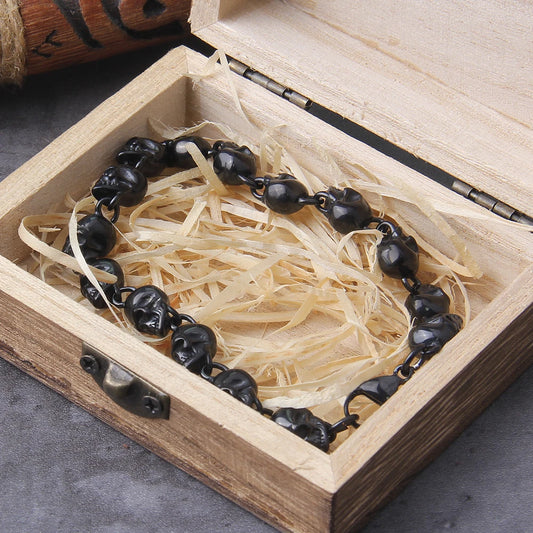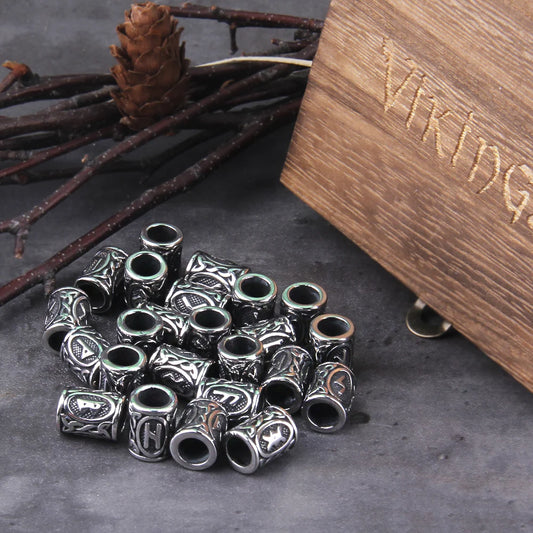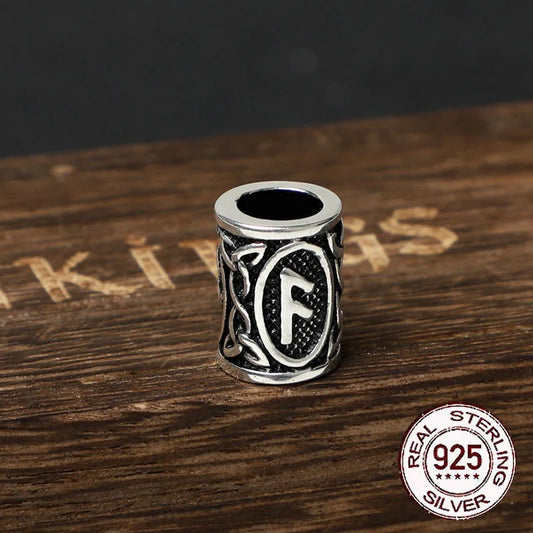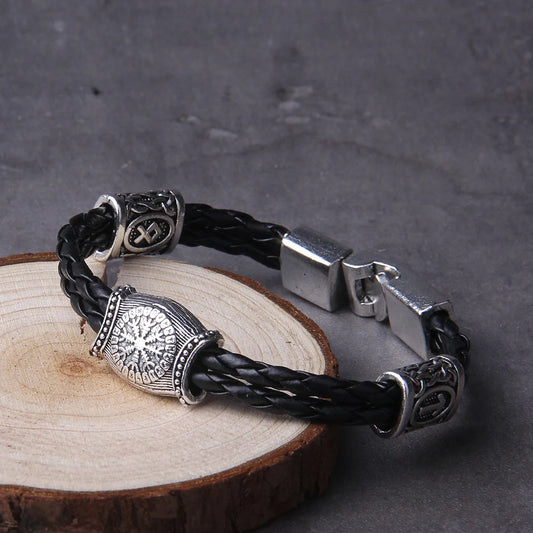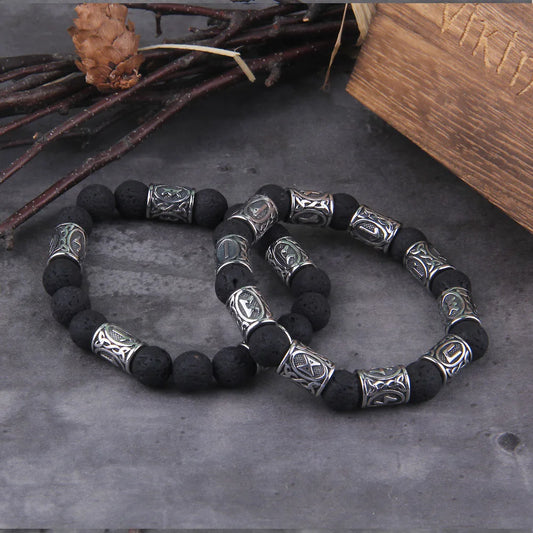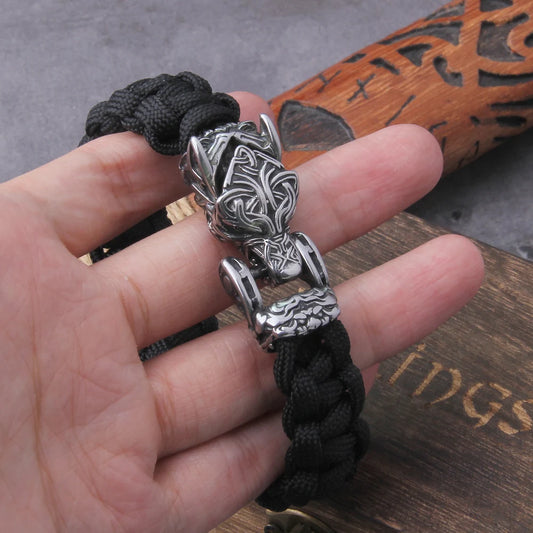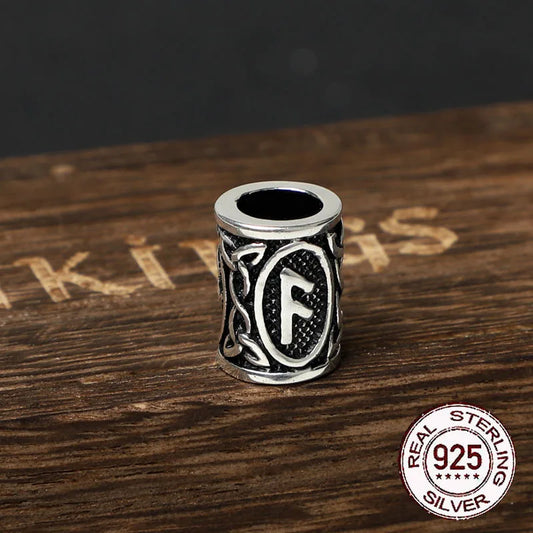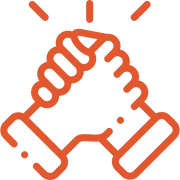Odin (Old Norse Óðinn), also called Wotan or Woden, is considered the main god of Norse mythology.
His role, like that of many Norse gods, is complex. He is the god of wisdom, war and death, but he is also considered, although to a lesser extent, the god of magic, poetry, prophecy, victory and hunting.
Odin resides in Asgard in the palace of Valaskjálf, which he built for himself and where his throne, Hliðskjálf, is located, from where he could observe what was happening in each of the nine worlds. In battle he wielded his spear, called Gungnir, and rode his eight-legged steed, called Sleipnir.
He was the son of Bor and the giantess Bestla, brother of Vili and Vé, husband of Frigg and father of many of the gods such as Thor, Baldr, Vidar and Váli. He is referred to in scaldic poetry with countless kenningar and one of those used to mention him is Allföðr ("Allfather").
As a god of war, he was in charge of sending the Valkyries to collect the heroic warriors killed in battle, the Einherjar, who sit beside him in Valhalla, where he presides over banquets.
At the end of times Odin will lead the gods and men against the forces of chaos in the battle of the end of the world, Ragnarök. There Odin will be killed and devoured by the ferocious wolf Fenrir, whom Vidar will immediately kill by tearing his jaws.
Etymology of Odin
Odin represents the evolution of the Proto-Germanic deity *Wōđinaz or *Wōđanaz, whose name derived from Óðinn (Old Norse) and Woden (Anglo-Saxon).
The Germanic chronicler Adam of Bremen, in his Gesta Hammaburgensis ecclesiae pontificum, refers to the god worshipped by the 11th-century Norsemen as "Wodan id est furor" ('Wodan, meaning fury').
An obsolete etymological alternative adhered to by many early writers, including Cornelius Agrippa in his Libri tres de occulta philosophia, is to give it the same root as the word "god" ('god'), from its Proto-Germanic form *ǥuđ-. According to most scholars,[citation needed] this is not a tenable theory, except for the Lombard name Godan, which may have its roots in *ǥuđanaz.
Óðinn is related to the word óðr, which in Old Norse has two meanings. As an adjective it means 'mad, frantic, furious or violent', and is cognate of the Anglo-Saxon word wōd. As a noun it means 'mind, wisdom, soul or sensibility' and 'song or poetry' and is cognate with the Anglo-Saxon word wōþ. In compound words, óð- means 'violently energetic'.
Odin's Personality
Odin is an ambivalent deity. Old Norse Viking Age connotations for Odin are related to "poetry and inspiration" as well as "fury and madness".
He is the god of knowledge. He sacrificed his left eye at the Well of Mimir, so that he could access infinite wisdom and know everything (except the future) and was the one who gave the brave poets the mead of inspiration made by the dwarves, from the vessel called Óð-rœrir.
However, another interpretation suggests a selfish character, since in the mythological tales of the Eddas it is mentioned that Wotan obtains knowledge of the runes after sacrificing himself on the world tree Yggdrasil and that knowledge he keeps to himself and does not share it with anyone else.
In the Hávamál it is clearly mentioned that he knows a series of runic incantations, which he keeps secret, although other sources say that he shared them with the humans residing in Midgard in order to get them to use the runes to communicate with the gods.
In the same way, by sacrificing an eye in the Well of Mimir, the knowledge he obtains is only for himself, in order to become the ultimate god, but such knowledge is not shared with anyone.
He is also associated with the concept of the wild hunt, Asgardsrei, a thundering, roaring movement across the sky, where he leads the hosts of the dead warriors.
Consistent with this, Snorri Sturluson, in the prosaic Edda, describes Odin welcoming the warriors who have died heroically in battle, in his residence, Valhalla, which literally interpreted means "hall of the slain in battle" where they can drink, eat and fight until Ragnarök comes, where they will fight alongside Odin.
He is also the god of war, appearing throughout many Norse myths as the one who brought victories. In the Norse sagas, Odin sometimes acts as an instigator of war conflicts, and was said to be able to start them by simply throwing his spear, Gungnir.
He would also send valkyries to influence battles and obtain the outcome he desired. He could sometimes appear on battlefields as the leader of the Norsemen, carrying on his shoulders two ravens, named Huginn and Muninn ("thought" and "memory"), and accompanied by two wolves, named Geri and Freki.
It is also suggested that Odin traveled the earth as an old, one-eyed, gray-bearded man, wearing a wide-brimmed hat and wearing a dark blue coat. He also performs magical practices, such as Seidr.
Although in the Eddas there are stories of a selfish and greedy Odin, there are also stories of a wise and humble god. In this way, the difference that the Norse gods are like humans, with their virtues and flaws, is demonstrated.
Odin's Wisdom
Being one of the oldest gods, creator of the world and of men, Odin is the lord of wisdom, expert in all things since the beginning of time. He has learned all the skills and then men have learned from him.
Among Odin's many epithets, many refer to his great sapience, and he has been called Fjölnir and Fjölnsviðr ("great sage").
Odin's wisdom is the fruit of knowledge, magic and poetry, all at the same time. He is knowledgeable about the mysteries of the nine worlds and their origins.
Odin enjoys competing in discussions with the wisest individuals. Under the guise of Gágnraðr ("victory"), he risked his life when the giant Vafþrúðnir, whose erudition was widely recognized, challenged him in a duel of wisdom about the past, present and future of the world.
The giant promptly answered all questions, but Gágnraðr at last asked what the god Odin whispered in his son Baldr's ear on his funeral pyre. Vafþrúðnir, at this point, recognized Odin's identity, for it was a rule that whoever asked a question must know the answer, and this answer was known only to the god himself. Thus, the giant lost the duel.
On another occasion, posing as a man named Gestumblindi ("blind host"), the god challenged a king named Heiðrekr to a duel of riddles. After a series of questions which both answered without difficulty, Odin asked the same question he had asked Vafþrúðnir. At this question, the king tried to kill him, but the god escaped in the form of a falcon.
Odin ventured to the Well of Mimir, near Jötunheim, the land of the giants in the guise of a wanderer named Vegtamr. Mímir, who guarded the well, to allow him to drink from it asked him to sacrifice his left eye, this being a symbol of his willingness to gain knowledge. As he drank he saw all the suffering and trouble that men and gods would have to endure, but he also glimpsed why it was necessary for this to happen.
The sacrifice of the greatest of all gods is a recurring theme in Norse mythology. In this regard it is worth mentioning that Tyr also sacrificed his hand in order to be able to chain Fenrir. Odin's eye remains at the bottom of the fountain, from which Mímir himself drinks every day.
From that self-inflicted mutilation derive the epithets Bileygr ("one-eyed") and Báleygr ("missing eye"). Odin keeps the head of Mimir, who was decapitated by the Vanir during their confrontation with the Aesir, and manages to make it speak by means of magic, being an inexhaustible source of knowledge that reveals to him the news of what is happening around the world.
Odin the God of Poetry
The spiritual fury that characterizes Odin is not only manifested in battle but is also reflected in literary compositions. It is for this reason that Odin is also considered the god of poets.
It is said that he always speaks in verse and that it was he who initiated the art of poetry in Northern Europe. Poetry is considered a supernatural power close to magic, since the quality of the poet who improvised was reflected in his ability to predict, which was not far from the work of a magician.
As Hávamál tells it, Odín worked as an assistant at Baugi's farm during one summer to get the mead of poetry that his brother, Suttung, had obtained from the dwarves. He had hidden it in the center of a mountain with his daughter Gunnlod as guardian.
The god worked on the farm until he knew where the mead was, then he seduced Suttung's daughter to let him have a sip and when he finally had access to the mead he drank it all at once, transformed himself into an eagle and escaped.
The mead of poetry along with the knowledge of the runes endowed him with his poetic ability. When he stole the mead, some of it was poured into the earth and this gave men the ability to sing.
Odin the god of Magic
Odin is the god of magic. According to the saga of the Ynglings, he had learned the mysteries of Seidr from the goddess Freya, despite the unwarriorly connotations that the use of magic had.
In the Lokasenna, Loki accuses Odin of the practice of Seidr, condemning it as an art that was not considered proper for a man.
Snorri explains that a justification for this accusation can be found in the saga of the Ynglings, where the Seidr practitioner was considered a weak individual.
Odin the god of War
Of all the figures in Norse mythology who possess the character of warrior deity, Odin is sometimes called Sigrföðr ("father of victory"), since he is the entity who decides the fate of battles and who will be victorious.
He is also called Valföðr, ("father of the chosen ones"), because it is considered that all those warriors who fall heroically on the battlefield become his adopted sons. Under these two names, Odin distributes victory and death in battle: both are welcomed by the warriors.
Many of the epithets used to describe his warlike character are Gunnarr ("lord of battle").
The unerring spear he holds in his fist was created by dwarves, the famous craftsmen known as the "sons of Ivaldi", and is called Gungnir. When Odin threw the spear, it sparked the world's first war, the conflict between the Aesir and the Vanir.
On the eve of the battles he turns to the formation that he has decreed will be defeated. He is therefore called Dörruðr ("[who] fights with spear"). He also has a golden helmet, which is why he is sometimes called Hjálmberi ("who wears a helmet").
Odin is terrifying to his enemies because he is an expert in the art of transformation. In war he has the power to blind, deafen or panic enemies as well as to terrorize their formations and to transform simple objects such as branches into deadly weapons.
No one is able to throw a spear at him with such force that he cannot stop it with his eyes alone. His war skills are based on magic and his knowledge of spells and runes.
Devotees to Odin placed their trust in him during war and invoked him as Sigföðr ("father of victory") and various similar names. In the tradition there are many examples of warriors who performed sacrifices and invocations to Odin for success in battles.
But for those chosen by the god, victory and glorious death were equally desired.
The warriors who died heroically were adopted by Odin as his sons and received them in Valhalla, where they participated in an eternal banquet over which he presided. He was also invoked as Valföðr ("father of the chosen") and more names of that nature.
The god determined whose turn it was to die on the battlefield and who were chosen to form the ranks of the einherjar, the warriors destined to form the army that would fight at his side on the day of Ragnarök.
Thus formed the army of souls guided by Odin himself, who for this reason is called Herföðr and Herjaföðr ("father of the formation").
Related to the cult of Odin were the warrior groups that went into a state of ecstasy during battle, the Ulfhednar and the Berserker, (literally "werewolves" and "bear-skins").
These groups of warriors were devotees of the god and before battle would enter a state of furious ecstasy, called berserksgangr, in which they would begin to roar, drool, and bite the edge of shields.
Then they would throw themselves into battle, shouting, waving their swords and axes, killing all who came near, insensible to pain and fatigue, until they fell down exhausted.
Odin the Wanderer
Wearing an old hat, a dark coat and sometimes carrying a staff for a walking stick, Odin is described as the wandering god who travels the ways of the world. For this, he is sometimes called Vegtamr ("wayfarer"). Thus, Odin is the god of travelers.
He travels the roads as a pilgrim, concealing his appearance and his true nature, some epithets describing him being Grímnir ("hooded"). He usually appears as an old man with a long beard, which is why he is also called Hárbarðr ("gray beard").
During his travels, very often, it happened that in order to spend the night he would ask for lodging in the residences of sovereigns as well as in the houses of humble people.
This is the reason why he is sometimes also called Gestr ("guest") and, in fact, in the past, all travelers who asked for hospitality were received for fear that it was the god hidden under one of his many guises.
Under the name of Grímnir, Odin arrived as a guest at the palace of King Geirrøðr, who suspected him and tortured him cruelly by keeping him chained between two intense fires.
After revealing to him some secrets of a divine nature and part of his numerous epithets, Odin showed himself for who he really was; King Geirrøðr ran repentantly to free him but stumbled on his sword and was pierced to death by it.
In Bárðr's saga, written in the thirteenth century, it is related that a one-eyed horseman in a broad hat and blue cloak met a blacksmith and asked him to shoe his horse. The blacksmith, somewhat suspicious, asked the horseman where he had spent the previous night; to which the horseman mentioned places so far away that the blacksmith took him for a liar.
The stranger related that he had spent a long time in the north and had fought in many battles, but that he was now on his way to Sweden. When the horse was shod, the rider mounted and said "I am Odin" to the astonished blacksmith and sped away. The next day the battle of Lena took place (year 1208). This is the last battle in which the Scandinavians attributed their victory to Odin.
The deposed Swedish king Sverker arrived with a large army of Danes and the Swedes led by the new king Eric found themselves outnumbered. It was said that Odin appeared riding Sleipnir and stood at the head of the Swedish formation and gave them victory. The context in which this saga is told is during a peace treaty in Norway and Odin, a god of war, no longer had much to do there.
Odin and the creation of the world
Odin and his brothers, Vili and Ve, are credited with the death of Ymir, the primeval giant, at the creation of the world. From Ymir's flesh, the brothers created Midgard and from the fragments of his bones and teeth they made the rocks and stones.
From Ymir's blood and sweat they created the rivers and lakes. From his skull they created the vault of heaven, secured at four points by four dwarves: Nordri, Sudri, Austri and Vestri (north, south, east and west). From Ymir's brain, the clouds were formed and from his eyebrows the barriers between Jötunheim (the home of the giants) and Midgard, the place where men now dwell, were created.
After creating the Earth from the remains of Ymir, the three brothers encountered two trunks. Odin gave them breath and life; Vili gave them a brain and feelings; and Ve gave them hearing and sight.
Therewith the trunks became the first man, Ask, and the first woman, Embla, and from them all men descend. Many kings and royal houses claimed descent back to Odin through Ask and Embla.
Odin's Attributes
Odin had three residences in Asgard. First was Glaðsheimr, a large hall where he presided over the twelve diar or judges and where the affairs of Asgard were regulated. Then there was, Valaskjálf, which was where his throne, Hliðskjálf, built entirely of silver, was located. Finally there was Valhalla, where he received the souls of the dead warriors.
The souls of the warriors and of those strong and beautiful women whom Odin favored became his daughters, the Valkyries, who collected the souls on the battlefields and served in Valhalla ("hall of the slain in battle"). This enormous palace had five hundred and forty gates and through each of them eight hundred warriors could pass in formation. It was also covered in gold, with golden spears and shields hanging from its walls.
He also had numerous magical objects that were associated with him, such as his spear, Gungnir, which never missed its target and a golden ring, Draupnir, which every nine nights produced eight new rings. These last two possessions were given to Odin by Loki.
Odin's Companions
Odin has different animals as his companions. The best known are his two ravens named Hugin and Munin, which he sends every morning to fly, in opposite directions, circling the world so that when they return in the evening they perch on his shoulders and whisper in his ear what they have seen.
He also owns two wolves named Geri and Freki, to whom he gives his due as lunch in Valhalla, since he feeds exclusively on mead and wine.
The relationship between Odin and ravens, in addition to being common for a god of war, is also common for a god of death, since ravens generally fed on corpses on battlefields.
It is believed that the raven banner that some Norse tribal chiefs carried in combat was a symbol of the god, to protect them and inspire fear in enemies. Wolves as well as ravens were also associated with battle; some of the kenningars, which were used in scaldic poetry to refer to battle are "raven feast" or "wolf feast."
Another animal that is always associated with Odin is his eight-legged gray horse, called Sleipnir, which allows him to travel swiftly over land, air and sea. It was a gift from Loki and was born as a result of the union of Loki (momentarily turned into a mare) and Svadilfari, the horse of the giant who built part of the walls of Asgard.
Cult of Odin
Origins
The worship of Odin dates back to Proto-Germanic paganism. The Roman historian Tacitus in his work De Origine et situ Germanorum mentions that the Germanic people worship and make sacrifices to Wodan like they do to Mercury.
Paul the Deacon, at the end of the VIII century in his Historia gentis Langobardorum relates that Odin Guodan was the main god of the Lombards and identified Odin also with Mercury.
In addition, certain parallels have been associated between Odin and the Celtic god Lug: both are intellectual gods, mastering magic and poetry; both have ravens and a spear, and both are one-eyed.
The reason they were associated is that, like Mercury, Odin was considered a psychopompos, "leader of souls". It was common for historians of the time to believe that the deities of other peoples and cultures were their own gods under different names.
A context that could have given rise to the diffusion of elements of Celtic rituals into Germanic culture may have occurred among the Chatti people, who lived on the borders between the Celts and the Germanic people in Hesse during the first centuries of the Christian era. Odin in his proto-Germanic form was not that of a chief god, but gradually replaced Tyr during the period of the great migrations.
The name Odin can be found in illustrations, runic stelae and bracteates belonging to the period of the great migrations, during the Vandal era depicting scenes that can be compared to medieval Norse texts and illustrations. The context of new elites emerging in this period is consistent with Snorri Sturluson's account that the native Vanir were replaced by the Aesir, continental intruders.
According to what is related in the saga of the Ynglings, Asgard was a place of solemn sacrifices that were presided over by twelve priests (called díar or drótnar) who were at the same time in charge of decisions and judgments.
From an evemerist point of view they could have been priests or tribal chiefs who were later divinized, but this is impossible to prove. In the case of Odin it is said that feeling close to death, he left Sweden and returned to his former home country, called Goðheimr ("god's country"), and his followers believed that he had actually returned to Ásgarðr to live eternally.
Although in the popular imagination Odin is sometimes considered the main god of the Nordic pantheon, this role is acquired in the last centuries of the rise of polytheism in northern Europe. It is presumed that the cult of Odin originated in Denmark around the 4th century and then spread throughout the Scandinavian peninsula, with much greater incidence in Sweden than in Norway.
However, it is more difficult to find samples of the cult in Iceland where the cult of Thor was prevalent. One suspicion is that the Scandinavian emigrants who colonized Iceland were more devoted to Thor and to deities related to agriculture such as Freya and Njord.
This marks a contrast between those who left the peninsula, populating Iceland, and the cause of these migrations, the first king of Norway Harald Fairhair, a fervent worshiper of Odin.
In Norse mythology, he is also referred to as the god of the sun's rays and god of archery.
In general, as Odin was a god of war and the magical arts, he was particularly important to warriors and to some individuals on the fringes of society. Farmers and fishermen preferred deities such as Thor, Njord or fertility gods such as Freya or Freyr. Odin was particularly revered during the early Viking Age during the period of plundering and pillaging of the northern coasts of Europe.
Sacrifices
In some occasions, before or after the combats, the sacrifice of some prisoners was made in honor to Odin. It is probable that the Tollund man, found in Jutland, naked and hanged along with others, is a case of this type of sacrifice.
In the particular case of sacrifices to Odin, the techniques used were hangings, impalements with sharp spears or cremations. The Orkneyinga saga is one of the sources that cites a very unusual ritual called blood eagle, which consisted in the separation and successive opening of the ribs in the spine.
Blóts
It is attested in primary sources that sacrifices were made to Odin during the Blóts. Adam of Bremen relates that every nine years, people from all over Sweden gathered to perform sacrifices at the Uppsala Temple. Men taken as slaves and males of each species were sacrificed and hung in the sacred groves near the temples in remembrance of the sacrifice made by the god to obtain the runes.
Since the Swedes had the right not only to choose their king but also to depose him, the sagas relate that both King Domalde and King Olof Trätälja were sacrificed in honor of Odin after a series of years of famine.
It has been argued that killing an opponent in battle was also a form of offering a sacrifice. The god's fickleness in battle is well documented and in Lokasenna, Loki mocks Odin for his changeable attitude.
Sometimes sacrifices were offered for him to change the circumstances of the moment. A notable example of this is the sacrifice of King Vikar which is detailed in Gautrek's Saga and by Saxo Grammaticus.
The sailors of a fleet whose course was being changed by the wind began to gamble at random which members of their own crew would sacrifice to Odin to bring down the winds. The king himself cast lots and was hanged.
Sacrifices to Odin probably took place at the beginning of summer, as the Ynglings saga states that one of the greatest festivals in the calendar was at sumri, þat var sigrblót "in summer, for victory."
The Ynglings saga also gives details of the sacrifices made by the Swedish king Aun, to whom it was revealed that he would extend his life if he sacrificed a son every ten years. According to the saga, nine of his ten sons had already been sacrificed, but when he was about to sacrifice his last son, Egil, the Swedes stopped him.
Arrival of Christianity
During Christianization, the worship of Norse divinities, including Odin, evolved depending on how Christianity was viewed by the pagans.
While during the Saxon Wars, Odin was seen as a demon by the Franks; for the Christian Lombards he was considered the Archangel Michael; for the Anglo-Saxons like Alfred the Great he was the founder of their dynasty (the House of Wessex) and although he was considered a god, he was one of the past and lesser than the Creator, who was Christ.
A clear example of the continuation of the traditions of Norse mythology is the Merseburg Incantations, the only text in Old High German with examples of pagan beliefs and where Uuôdan is cited and identified as Wodan.
Nowadays
Since the second half of the 20th century, a new neo-pagan religion has emerged, recalling the ancient Nordic and Germanic tradition. Those who followed the Nordic tradition called this cult Ásatrú (in Icelandic "Fidelity to the gods") and those who followed the Germanic tradition called it Odinism because of the central role played by Odin in this religion.
Also, later on, Wotanism (name derived from Wotan, traditional Germanic term used for the name of Odin), a religion that incorporates beliefs and practices extracted from the Teutons and other Germanic tribes, would be founded.
The origins of Odinism go back to the work of the Australian Alexander Rud Mills who in the 1930s founded the first Anglican Church of Odin.
The first country where Ásatrú was recognized as a religion was Iceland in 1972, following the efforts of the Icelandic poet Sveinbjörn Beinteinsson.
He founded the group Ásatrúarmenn ('Men who trust in the gods'), now called Ásatrúarfélagið (Association of those who trust in the gods). This spiritual current seeks to recover the traditions and religion of the Nordic peoples.
Today this religion is officially recognized in Iceland, Norway, Denmark, Sweden and Spain, but the cult is present and organized in Great Britain, France, Belgium, Holland, Germany, Italy, the United States and other countries.
As for Wotanism, it is difficult to clarify the circumstances that led to its creation. For, we can suppose that it arose spontaneously as a form of worship and belief in the ancient pagan religions. Or as a separation, due to discrepancies with the previous neo-pagan religions.
Odin's Influence in Popular Culture
With the Viking revival of the early to mid-nineteenth century, the popularity of the figure of Odin increased again:
Music inspired by or for the god includes the ballets Odins Schwert (1818) and Orfa (1852) by J. H. Stunz.
Odin (Wotan) is one of the main protagonists of Richard Wagner's series of epic operas, Der Ring des Nibelungen (1848-1874).66 This particular depiction influenced many writers of fiction and has resulted in varied references and allusions in various media.
The novel American Gods (2001) by Neil Gaiman, stars Odin called "Mr. Wednesday", where he travels across the United States, in a particular struggle that pits old and new gods against each other. Ian McShane will portray Mr. Wednesday in the 2017 series adaptation of the novel.
Several characters in the fictional J. R. R. R. Tolkien novels were inspired by the god Odin. The appearance of the wizard Gandalf, is particularly inspired by the "pilgrim" Odin, in addition other aspects of the god have influenced other characters such as Saruman or Manwë.
Odin also has a version of himself in Marvel Comics, in The Mighty Thor series and in several Marvel movies such as Thor, Thor: The Dark World or Thor: Ragnarok. The series' depiction of Odin is based on Norse mythology, but with considerable modifications.
Robert E. Howard's short story The Cairn on the Headland includes a particularly negative depiction of Odin as a malevolent demonic force that had been buried for hundreds of years under a mysterious spell and is prevented at the last moment from emerging and wreaking havoc in modern Dublin.
Poul Anderson's time travel story entitled "The Sorrow of Odin the Goth," states that Odin was a twentieth century American time traveler who sought to study the culture of the ancient Goths and ended up being regarded as a god, thus beginning the mythos we know today.
In Eric Norden's alternate history, The Ultimate Solution, Germany wins World War II and conquers most of the world - where the victorious Germans embark, among other things, on the aggressive promotion of "The Odinist Religion" to eventually displace Christianity. By using the name Odin, the National Socialist racial religion depicted has little in common with the original Norse religion.
In the video game Fire Emblem Fates, representing one of the vassals of the royal family of Nohr.
In the video game Assassin's Creed: Valhalla he appears as one of the Isu, communicating with Eivor at important moments in the plot.
